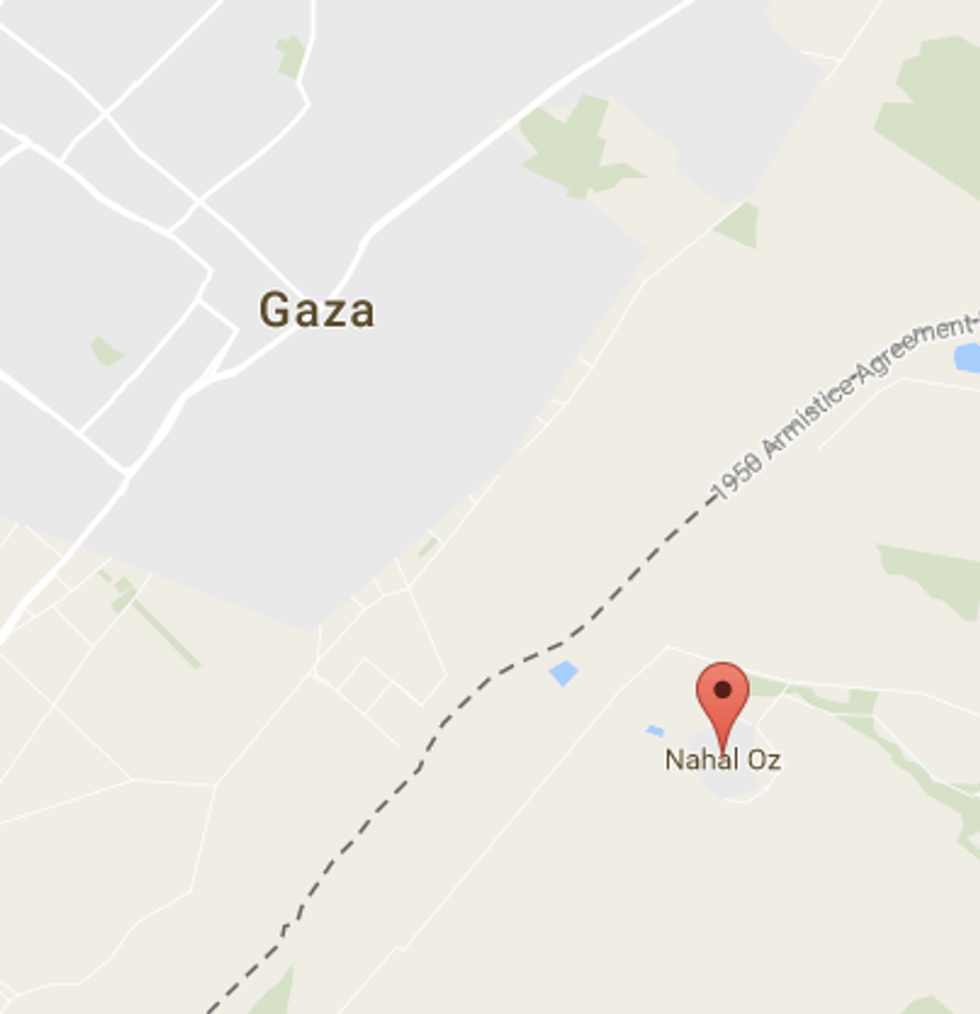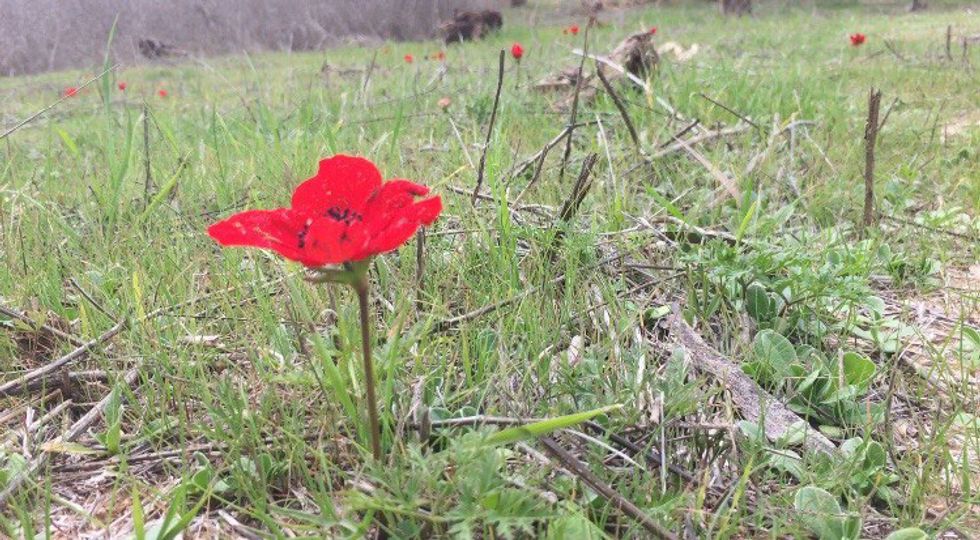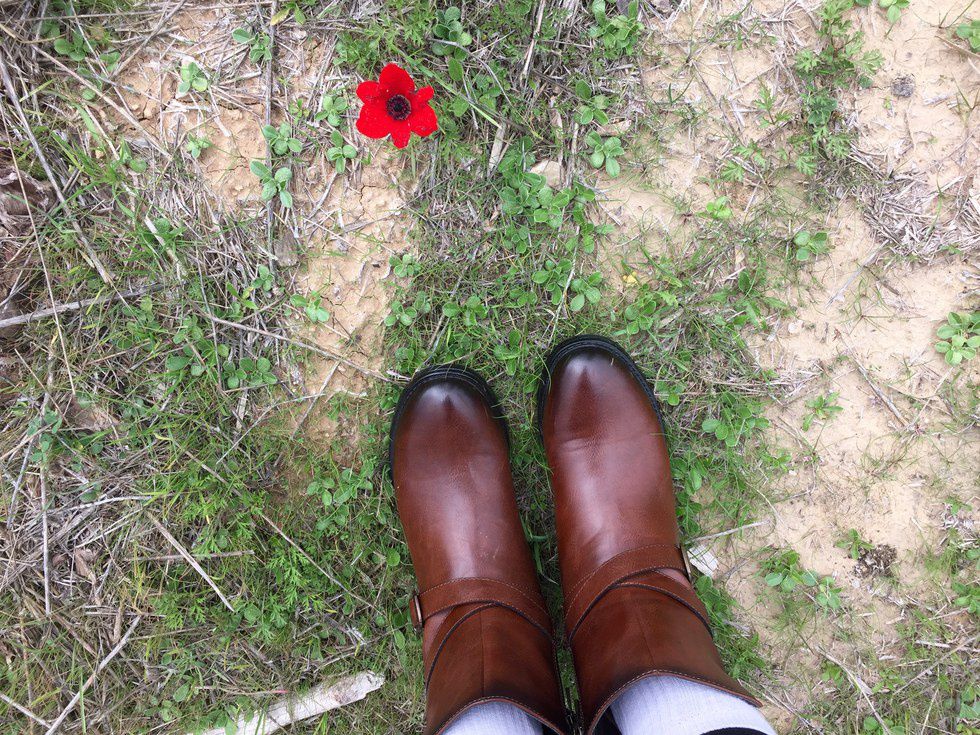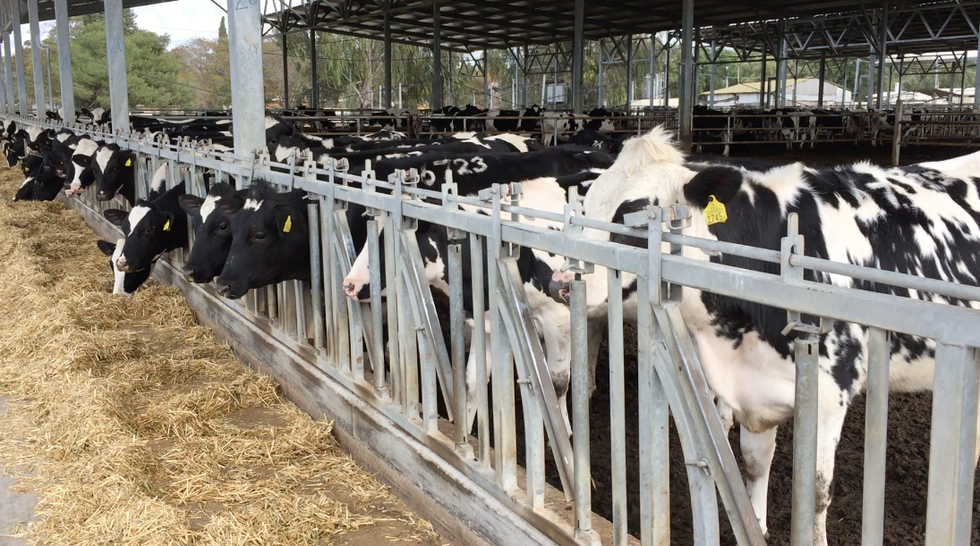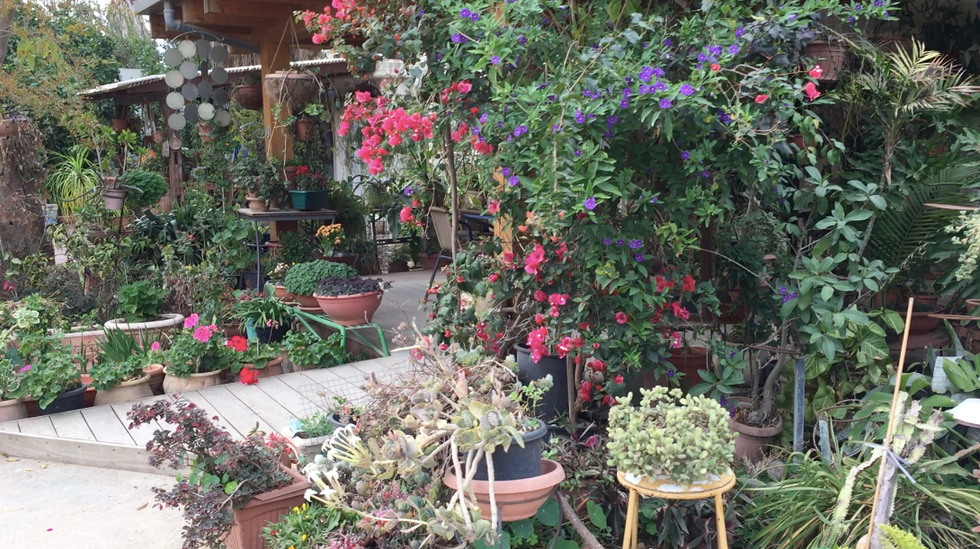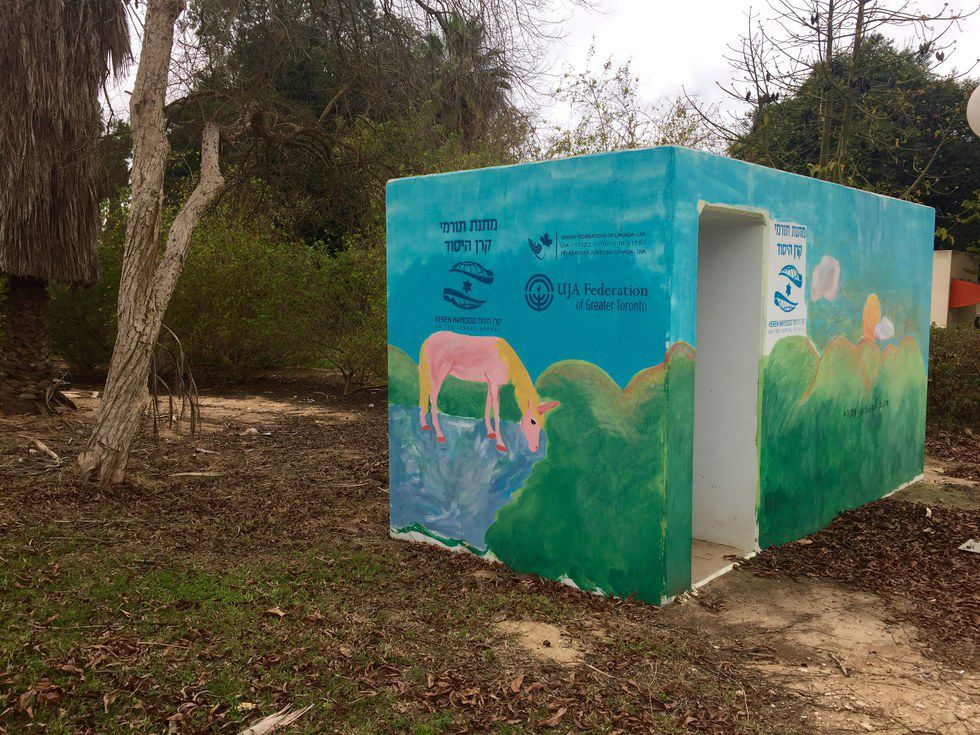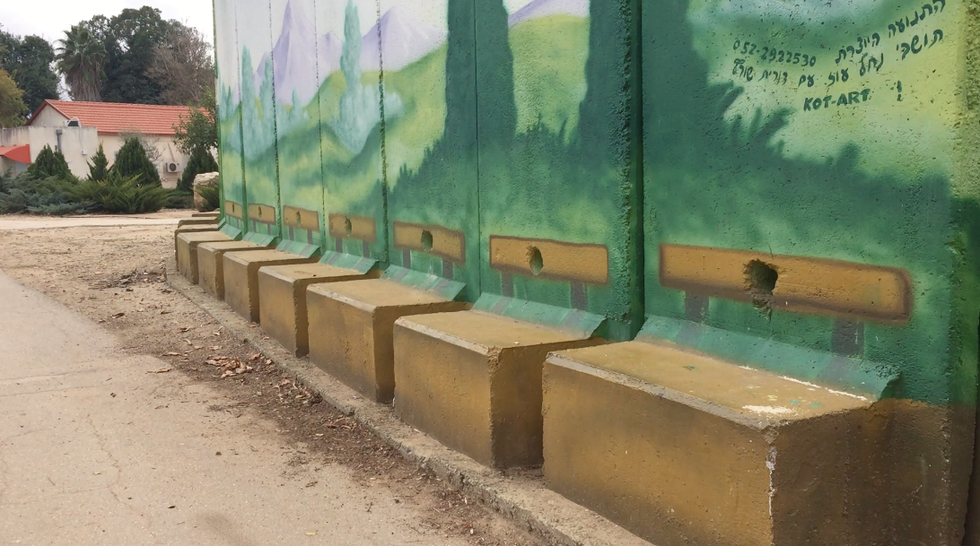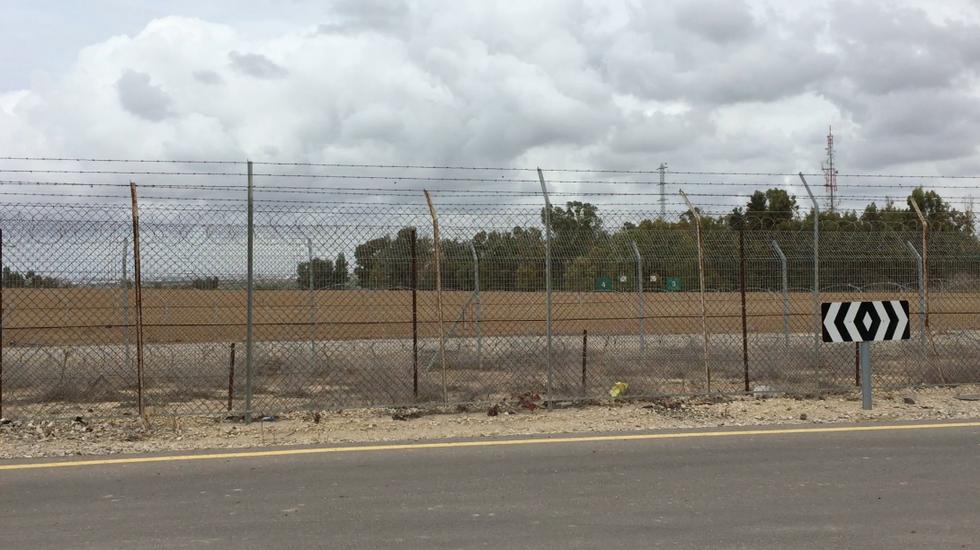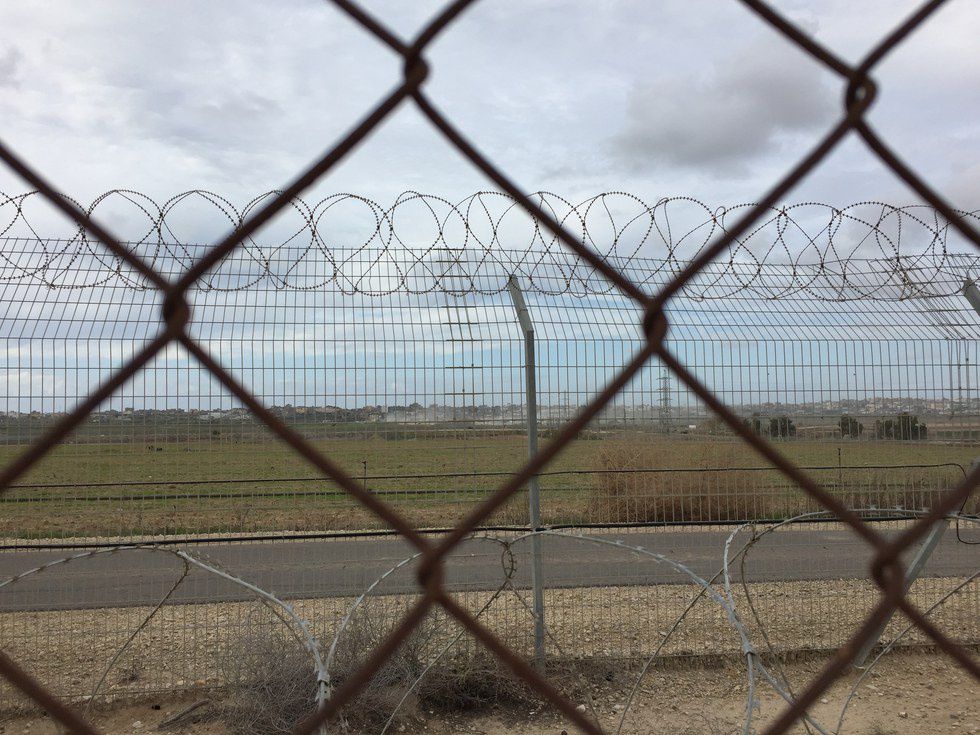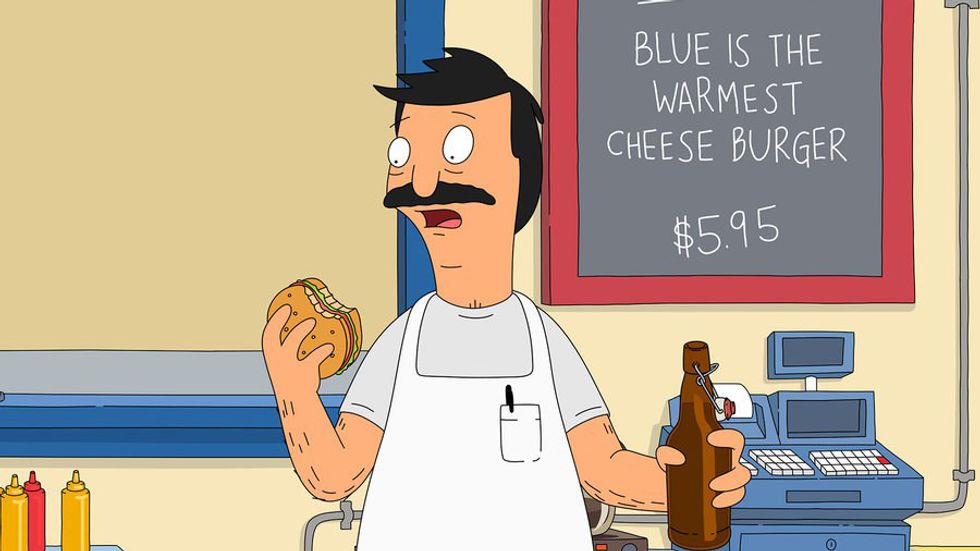Before leaving for the train station, my grandma showed me a map of Israel and pointed to where exactly we were heading. She pointed to a spot on the map right next to the Gaza border; so close that it seemed like a minute-walk away. I was caught by surprise when finding out how ridiculously close this place was to a war zone. And because of this, I was honestly expecting to see deserted homes, a lot of border patrol, and vast fields of dirt and dried grass surrounded by layers of fences.
After a long train ride, we arrived to Nahal Oz, one of the 20 kibbutzim in this southern region, and in fact the closest place in Israel to the Gaza Strip.
In case you were wondering, this is where it is on Google Maps.
My grandma's sister met us at the station and gave us a quick tour of the area, including a famous poppy field that unfortunately had not been in full bloom yet. But we got to see the beginning of what will be a beautiful field of red in a few weeks.
We entered the kibbutz of Nahal Oz, where over 350 people live today. My grandma's sister is one of them and has been residing there for over 50 years. The kibbutz was established mainly for agricultural purposes, and today some parts of that lifestyle still remain. There are fields for growing wheat and vegetables, run by several people in the kibbutz. One of the most renowned cow farms of Israel is in Nahal Oz, from which milk is collected and sold to the surrounding areas.
All of my expectations were quickly proven wrong one after the other as we drove past the vast fields of green farmlands, homes adorned with fruit trees and colorful flowers, and people walking with their kids and dogs. It was so quiet and peaceful there that I instantly forgot that just 800 meters away was a war zone. The only reminders of that reality were the thick-walled concrete shelters that stood every 50 meters or so throughout the kibbutz in case of any events that required shelter.
But of course, it hasn't always been this way.
In the Israel-Gaza conflict of 2014 (known as Operation Protective Edge), Nahal Oz suffered the most. Over the course of the war which lasted 54 days, the kibbutz received over 400 missile rockets. Because Nahal Oz is so close to Gaza, Israel's missile defense system Iron Dome could not work to protect its people. The community suffered casualties and major destruction, and many younger families fled without ever coming back. It took many long months for the community to recover after such a terrible time, but their struggles are never over. There is always a possibility of an attack or infiltration by a terrorist in the area -- but this reality is something that the entire population of Israel has lived with since the country's establishment in 1948. So despite these concerns, the people of Nahal Oz go on living their normal everyday lives, maintaining a healthy and thriving community within the kibbutz.
Today, the kibbutz is surrounded by two to three fences. Just across the fence, you can see the buildings and homes of the Gaza Strip pretty clearly. In between lies fields that people are prohibited from entering without special permission from the army. The nearby army base serves to protect the community by constantly being on the look out for any suspicious activity in Gaza.
After hearing all of this from my grandma's sister who has never left the kibbutz, I started to think, why wouldn't you leave? If so much is at risk and at any moment sirens could go off to indicate a falling missile, why would you stay? The answer to that lied in the basic ideals on which this kibbutz was founded. The idea behind the kibbutz is to build a reliable, friendly community of people that work and stick together for the greater good. During both tough times and happy times, residents support one another no matter what. For my grandma's sister who has built her and her family's lives in this kibbutz, this place is and will always be home.
This quiet community, despite being one of the most bombarded places in Israel, is so safe that people leave their bikes lying around and kids forget to pick up their toys outside, but without the worry that it won't be there the next day. Although I was there for only a few hours, my time spent in Nahal Oz is one that I won't forget, as it reminded me that this kind of eye-opening, at times harsh reality is what living in Israel entails. However, situations like these and fear should never keep one from moving forward and living.
And I hope that someday in the future, there will be peace that allows all of these fences to come down.




